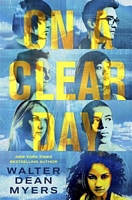While almost all of our students know what the word “bootleg” means in contemporary slang, few, if any, know of prohibition, the eighteenth amendment, or that Al Capone was born in Brooklyn. This engaging narrative history begins in 1875 with the birth of Morris Sheppard, later known as The Grandfather of Prohibition, and takes the reader through American history, highlighting key figures in the story like Carrie Nation (Chapter 3), the notorious bar smasher, Al Capone (Chapter 8), infamous gangster, and ending with MADD and Red Ribbon Week. Throughout, Blumenthal refrains from any final judgement on the “wets” and the “drys,” focusing on the dual messages that “each of us is responsible for our own behavior” and that “the experience of prohibition continues to color our laws, our debates and our personal lives.” Rich backmatter includes a glossary, discussion questions from the author, an interview with the author, additional resources, source notes, acknowledgements and an index. Recommended for independent reading, as a teaching text for non-fiction ELA units, an enrichment text for American history, and even a book club. .--Jessica Fenster-Sparber
Blumenthal, Karen. Bootleg: Murder, Moonshine, and the Lawless Years of Prohibition. New York: Roaring Brook Press, 2011.








